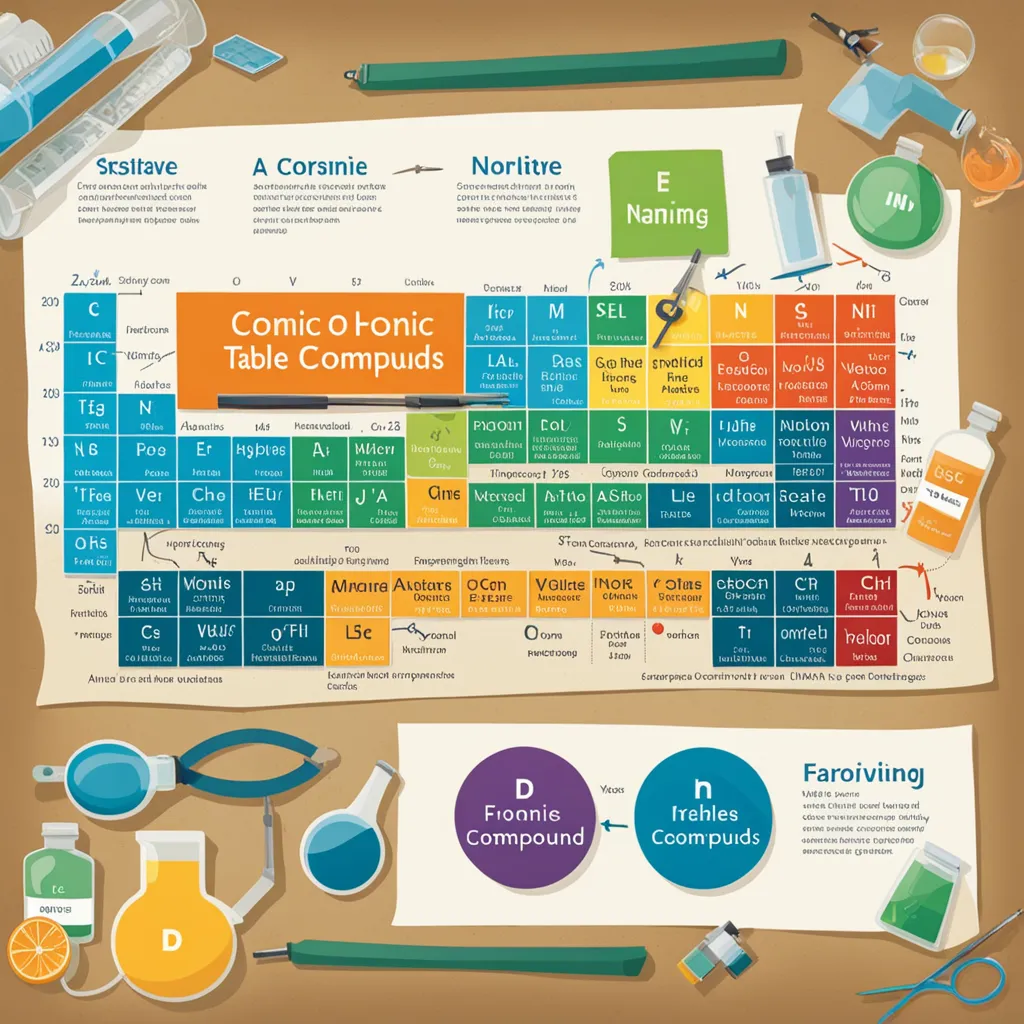How to Name Ionic Compounds
How to Name Ionic Compounds
Ionic compounds are made up of ions which are atoms that have gained or lost electrons and carry a charge. Naming these compounds correctly is crucial in the field of chemistry. The process, while it might seem daunting at first, follows a set of specific rules that make it manageable.

Understanding the Basics
Ionic compounds consist of a positive ion (cation) and a negative ion (anion). Typically, the cation is a metal ion and the anion is a nonmetal ion. The key to naming ionic compounds is knowing the charges on the ions.
Steps to Name Ionic Compounds
- Identify the Cation and Anion: Begin by determining the cation and anion in the compound. Remember that the cation is always written first.
- Naming the Cation: For a monatomic (single-atom) cation, use the element’s name. For transition metals, which can have multiple positive charges, the charge is indicated in Roman numerals in parentheses.
- Naming the Anion: For a monatomic anion, take the root of the element’s name and add the suffix “-ide.”
- Combining Names: Combine the names of the cation and anion. For example, NaCl becomes sodium chloride.
- Polyatomic Ions: For compounds containing polyatomic ions (ions made up of more than one atom), use the name of the polyatomic ion as it appears on the list of common polyatomic ions. For example, NaNO₃ is sodium nitrate.
Special Cases
- For some ionic compounds like hydrates, which contain water molecules, include the number of water molecules as a prefix (e.g., CuSO₄·5H₂O is copper(II) sulfate pentahydrate).
- In ionic compounds with polyatomic ions, if there is more than one of a particular polyatomic ion, enclose the polyatomic ion in parentheses and add a subscript outside the parentheses indicating the number of ions.
FAQs About Naming Ionic Compounds
Question: What if the compound contains a transition metal?
Answer: For transition metals, you need to specify the ionic charge of the metal in Roman numerals because these metals can form more than one type of ion. For example, FeCl₂ is iron(II) chloride, while FeCl₃ is iron(III) chloride.
Question: How do I name a compound with a polyatomic ion?
Answer: Use the name of the polyatomic ion as it is. For example, NH₄Cl is ammonium chloride, where ammonium is the polyatomic ion.
Question: Can ionic compounds have molecular prefixes like mono-, di-, tri-?
Answer: No, these prefixes are not used in naming ionic compounds. They are used in covalent compound nomenclature.
Question: What’s the difference between the -ide, -ate, and -ite suffixes in ionic compound names?
Answer: The suffix “-ide” is used for simple anions, “-ate” is used for a polyatomic ion with a larger number of oxygen atoms, and “-ite” for one with fewer oxygen atoms. For example, NO₃⁻ is nitrate, while NO₂⁻ is nitrite.
Conclusion
Naming ionic compounds correctly is a fundamental skill in chemistry that allows for clear communication and understanding of chemical compositions. By following these guidelines and practicing regularly, anyone can master the art of naming ionic compounds. This not only aids in academic pursuits but also lays the groundwork for a deeper understanding of chemical interactions and behaviors.